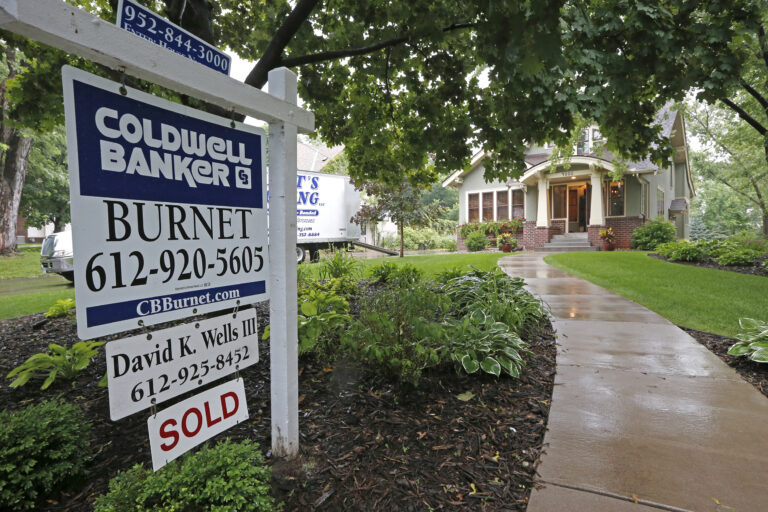Real estate commissions have survived the rise of the Internet and decades of attacks from disruption-minded discounters. Now, finally, they might be coming down.
A federal lawsuit has forced changes to the way consumers negotiate and pay real estate agents. In October 2023, a federal jury in Missouri found that the National Association of Realtors (NAR), along with several large brokerages, conspired to inflate Realtors’ commissions. The brokerages all settled out-of-court, and in March 2024, NAR settled as well, agreeing to pay $418 million in damages and change some of their longstanding rules. (Final court approval is expected in November.) Here’s what it means for homebuyers and sellers.
How real estate commissions are changing: A ‘price war’?
As of August 17, home sellers are no longer automatically responsible for paying both their own agent and the buyer’s agent. Instead, homebuyers who want representation may have to pay their own agents separately: Under the new system that NAR agreed to in settling the suit, when a home hits the market, listing agents will no longer specify how much the buyer’s agent will be paid. Instead, that fee will be negotiated separately between the buyer and the buyer’s agent.
Next up, perhaps: Full-throated price competition among buyers’ agents. “You’re going to see a buy-side price war by next year,” says Vishal Garg, CEO of mortgage company Better.
Technically, real estate commissions have always been negotiable. Practically, though, agents are more skilled at negotiating than their clients, and commissions have clustered in the range of 5 percent. The new rules set the stage for buyer agents to aggressively market their fees. Stephen Brobeck, senior fellow at the Consumer Federation of America, expects commissions will ultimately fall below 4 percent, maybe even to 3 percent. “Over time, more agents will feel free to offer different types of compensation, and more consumers will comparison shop and negotiate commissions in a more transparent marketplace,” he said.
A new era of competition among buyer agents is coming soon, says Garg. “In the best-case scenario, consumers are going to shop around for buy-side agents in the same way they shop around for mortgage lenders,” he says.
A financing wrinkle
There are still many details to be worked out. If the buy-side agent is no longer paid from the listing commission, then that means the buyer is responsible for paying their agent directly — a sum that would average about $10,000, based on a 2.5 percent commission and a $400,000 sale price. For now, buyers aren’t allowed to roll that amount into their mortgage to be paid over time. However, it’s possible that the Federal Housing Finance Agency will change its rules to allow Fannie Mae and Freddie Mac mortgages to include commissions. Industry experts expect federal regulators to tackle that topic in the near future.
How much do commissions cost?
Under the longtime standard, if a homeowner sold a property for $400,000, about average for existing homes in the United States, the seller paid a commission of around 5 percent, amounting to $20,000. That amount was then split between the seller’s own agent and their buyer’s agent (which hardly mattered to the seller, who still had to pay the full amount regardless).
Long ago, 6 percent was the going rate for real estate commissions; 3 percent to each agent. But after decades of competition and regulatory scrutiny, the typical commission now is slightly less than 5 percent, according to data from Anywhere Real Estate, the parent of Coldwell Banker, Century 21 and other large real estate brands. In its filings with securities regulators, publicly traded Anywhere reports that its average commission “side” — half the commission — is currently about 2.4 percent.
While commissions briefly rose during the Great Recession and again in 2023, rates in general have been falling steadily for decades. For Realtors, this decline in commission rates has been offset by rising home prices: They’re getting a smaller piece of the pie in terms of their percentage-based fee, but the pie is getting bigger.
About the NAR lawsuit
In the case that went to trial in 2023, Missouri home sellers alleged antitrust violations by NAR and four major brokerages: Keller Williams, Anywhere, RE/MAX and HomeServices of America. Anywhere and RE/MAX settled before trial — paying $83.5 million and $55 million in damages, respectively — while the other defendants opted to take their chances in the courtroom.
The jury ruled against the industry, and a judge ordered NAR and the two remaining brokerage firms to pay $1.8 billion in damages to home sellers. Keller Williams eventually settled for $70 million, and HomeServices of America, part of Warren Buffett’s Berkshire Hathaway, settled for $250 million. NAR also agreed to pay up and change its practices.
Other dramas
NAR has recently faced other headwinds in addition to the antitrust lawsuit and related cases. A sexual harassment scandal led to the resignation of the organization’s then-president in 2023, and the organization’s next president and longtime CEO then stepped down as well.
All the drama has created unease and unrest in the ranks. Redfin cut ties with the trade group, requiring many of its brokers and agents to cancel their memberships, and other brokerages have followed suit. In addition, two influential real estate agents have launched a competing trade group, known as the American Real Estate Association (AREA).
One of the new group’s cofounders, Jason Haber — a broker/agent at Compass in New York City and an outspoken NAR critic — described AREA as an alternative, not a replacement. “We’re not trying to replace NAR. We’re not trying to replicate NAR,” he said. “They have a 108-year head start.”
Competition and the MLS
The residential real estate industry has long presented a dichotomy. On the one hand, it has essentially controlled the marketing of properties for sale through a nationwide network of multiple listing services (MLSs). That reality has led to grumblings about collusion and price-fixing, along with scrutiny from the U.S. Department of Justice.
On the other hand, real estate sales is a relatively easy business to get into, as evidenced by NAR’s membership rolls of more than 1.5 million agents. To earn a real estate license, an agent typically needs to take a couple of classes and pass a state exam. No college degree is required, and the costs of entry are modest. However, the settlement is expected to thin the ranks.
Lawrence Yun, NAR’s chief economist, pointed last year to these low barriers to entry as evidence that competition is alive and well: “Real estate is a perfectly competitive industry,” Yun said during the organization’s annual conference in November.
Brobeck, the consumer advocate, disagrees with that assessment. “It’s not a free market right now,” he said. “There’s intense competition for clients. But there’s no competition on rates. In a normal marketplace, you compete based on marketing, but also on the price you charge.”
Meanwhile, the industry mantra has long held that commissions are negotiable, suggesting that sellers and buyers call the shots when it comes to how much they pay agents. In practice, though, consumers buy or sell a home only once every 5 to 10 years, if that, and many aren’t knowledgeable enough about the process to successfully negotiate the rate down.
“Consumers are at a disadvantage,” Brobeck said. “They buy and sell homes infrequently, and they’re mostly concerned about sale price and timing.”
Historically, discounters have not succeeded
For decades, detractors have predicted the demise of real estate commissions. These fees were sure to go the way of stockbrokerage commissions and travel agency fees, the naysayers said. Instead, real estate commissions have proven stubbornly resilient.
It’s not for a lack of trying. Many disruptors have seen commissions as a problem to be solved, but most have fallen short of reshaping the industry.
In the early 2000s, for instance, a splashy discounter known as YourHomeDirect (and later Foxtons) offered 2 percent commissions in New York and New Jersey. But after advertising heavily and gaining market share, it ultimately collapsed.
A decade later, London-based Purplebricks pushed into the U.S., wooing sellers with a flat fee of $3,200. It, too, overestimated demand and pulled out of the U.S. market in 2019.
One high-profile discounter, Seattle-based Redfin, has achieved greater staying power. It launched as a cheaper alternative to traditional brokers and touted listing fees of just 1 percent, although it has since shifted to focusing on 1.5 percent listing fees.
How sellers can save on real estate commissions
If you’re not keen on paying agent commissions, here are some alternative options:
Go it alone: Sell your home without an agent in a “for sale by owner” transaction. Between July 2022 and June 2023, 7 percent of home sales were sold by owners without the help of an agent, according to NAR data. But selling without professional help is a lot of work to do on your own, and it technically only saves you one agent’s commission — you may still have to pay your buyer’s agent.
Negotiate: If you don’t want to go it alone, ask agents about their commission rates upfront and compare the terms of each person you talk to. If you think the fee is too high, see if they’re willing to lower it. If both agents in the transaction are from the same brokerage, you might have more leverage to negotiate.
Hire a discount agent: A low-commission real estate agent will likely charge much less than a traditional agent would — usually 1 to 1.5 percent of your home’s sale price. (However, you might not receive the personalized attention you would with a traditional Realtor.) There are also brokerages and agents who work on a flat-fee basis, earning a preset amount on the sale rather than a percentage of the sale price.
Sell to a cash-homebuying company: These companies, which often advertise “we buy houses,” pay in cash, close quickly and typically charge no fees. However, if you sell this way you’re likely to get a lower price for your home than you would with a traditional sale.










